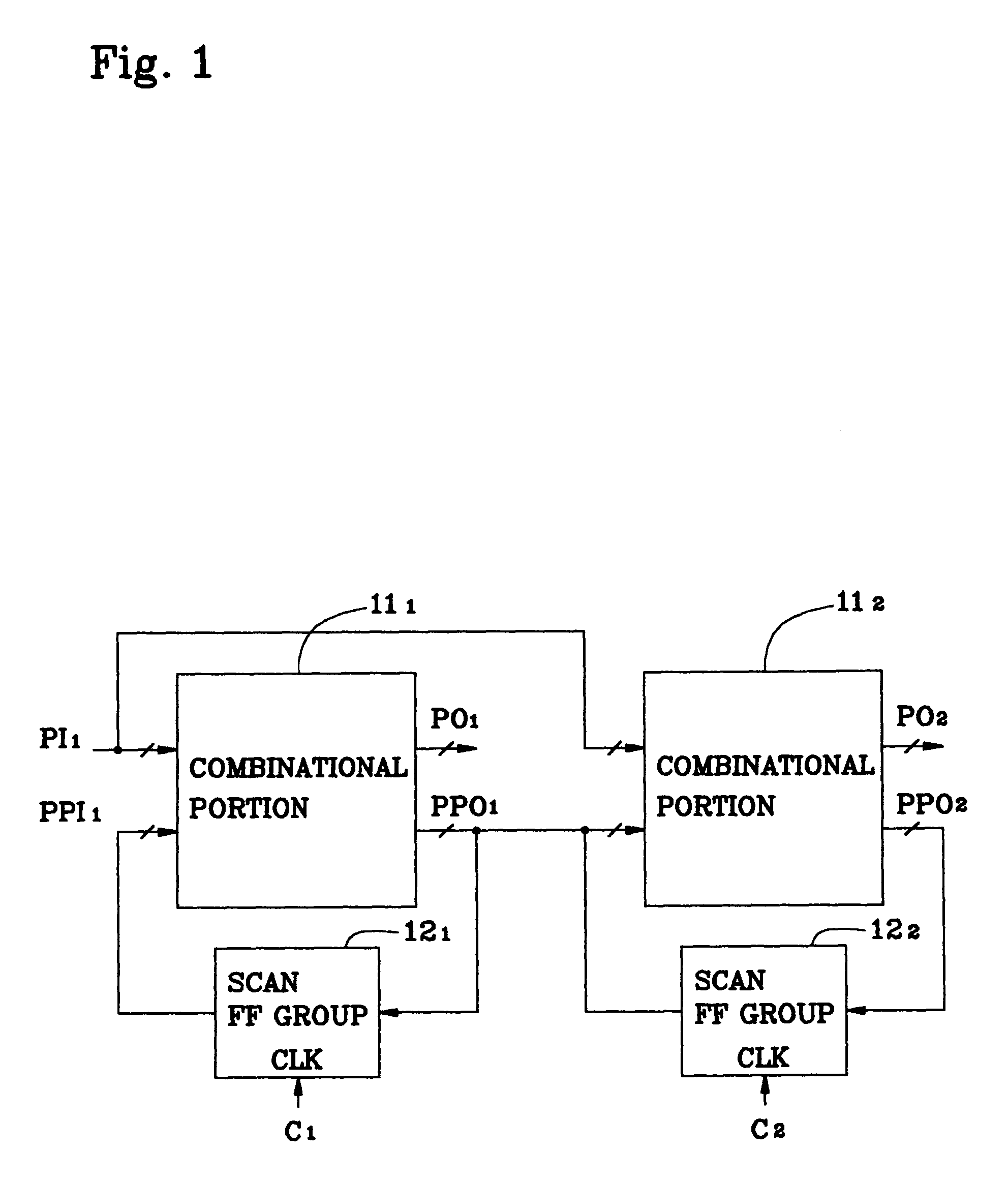Test vector generating method and test vector generating program of semiconductor logic circuit device
a technology of logic circuit device and test vector, which is applied in the direction of instruments, error detection/correction, computing, etc., can solve the problems of power consumption remarkably larger in a test mode than in a usual operation mode, and the controllability of pseudo external input lines and observability of pseudo external output lines, so as to avoid an erroneous test, reduce power supply voltage, and reduce power consumption
- Summary
- Abstract
- Description
- Claims
- Application Information
AI Technical Summary
Benefits of technology
Problems solved by technology
Method used
Image
Examples
Embodiment Construction
[0031]FIG. 1 is a circuit expansion view showing the principle of a test vector generation of a semiconductor logic circuit device according to the present invention.
[0032]FIG. 1 is used for explaining the reduction of the power consumption in the case where the semiconductor logic circuit device of FIG. 14 is subjected to double-capture pulses C1 and C2. Therefore, the combinational portion 11 and the scan flip-flop groups 12 of FIG. 14 are hypothetically doubled, i.e., combinational portions 111 and 112 each being the same as the combinational portion 11 and scan flip-flop groups 121 and 122 each being the same as the scan flip-flop group 12 are hypothetically doubled. In this case, external input lines PI1 of the combinational portion 111 serve as external input lines PI2 of the combinational portion 112, and pseudo external output lines PPO1 of the combinational portion 111 serve as pseudo external input lines of the combinational portion 112. Further, the scan flip-flop group 1...
PUM
 Login to View More
Login to View More Abstract
Description
Claims
Application Information
 Login to View More
Login to View More - R&D
- Intellectual Property
- Life Sciences
- Materials
- Tech Scout
- Unparalleled Data Quality
- Higher Quality Content
- 60% Fewer Hallucinations
Browse by: Latest US Patents, China's latest patents, Technical Efficacy Thesaurus, Application Domain, Technology Topic, Popular Technical Reports.
© 2025 PatSnap. All rights reserved.Legal|Privacy policy|Modern Slavery Act Transparency Statement|Sitemap|About US| Contact US: help@patsnap.com



